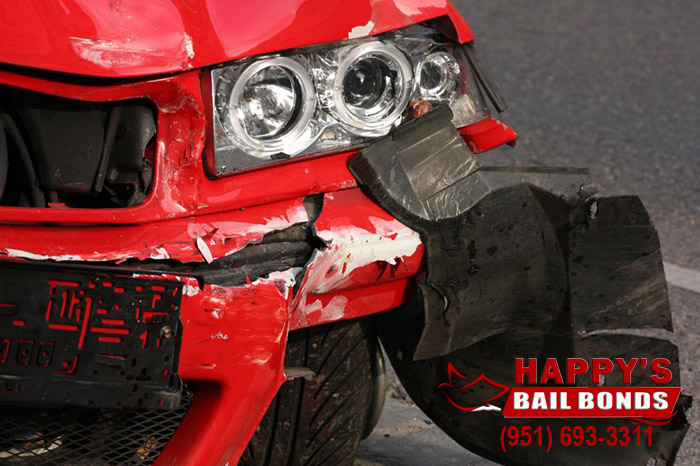
13 Jan What Counts as Hit and Run in California?

Nobody enjoys accidents, no matter how big or small they may be. However, dealing with spilled milk is much more tolerable than dealing with a car accident. Car accidents can range anywhere from a mild fender bender, to full on wrecks. At the low end of the spectrum, car accidents are a nuisance, at the other end, they can be devastating.
Arguably one of the hardest and most unpleasant thing for a person to do is own up to their mistakes. When a person has caused an accident, no matter how bad, they need to stay and deal with it. If a person doesn’t stay, either because they are late for something or they are afraid of the consequences, they are guilty of hit and run. Facing hit and run charges can be a lot worse than simply dealing with the accident when it happens, which is part of the reason why the law exists in the first place.
What Is the Definition of Hit and Run?
California Vehicle Code (VC) 20002 and VC 20001 are both about hit and run crime. VC 20002 defines misdemeanor hit and run, while VC 20001 lays out the parameters of felony hit and run. The difference between the two is dependent on what was damaged. One law deals with property damage, and the other is more concerned about whether people were harmed or killed.
In California, a driver who has been involved in an accident has certain duties that they have to do. The drivers have to do these things regardless of whether or not the accident was there fault. For instance, after an accident, a driver is expected to pullover immediately. They then need to talk to anyone else who was involved with the accident. They will need to provide their identifying information, driver’s license, and vehicle registration. Failing to do this can cause a driver to face hit and run charges.
VC 20002 defines misdemeanor hit and run in the state of California. Here in the state, a person is considered guilty of misdemeanor hit and run if:
• And another party’s property was damaged. Property can be anything from a mailbox to a car to a pet.
This law also applies to any driver who has hit a parked car. If the owner of the other vehicle is not present, the driver needs to either wait to see if the owner shows up, or leave a note with their contact information and a description of what happened. The note should be left in location where the owner of the vehicle can find it. The driver should then contact the local authorities to inform them of the incident. Doing this will show that the driver tried to remedy the situation and did not perform a hit and run.
VC 20001 deals with hit and run incidents that involve the injury of death of a person. This is a felony charge since causing harm to a person is a much bigger deal than damaging someone else’s property. As such, the consequences of the law are more severe than misdemeanor hit and run. The rules for felony hit and run are the same as misdemeanor, except instead of property being damage, a person was hurt.
Due to the distinction between the two charges, it is possible for a person to be charged with both misdemeanor and felony hit and run for the same accident.
What Are the Penalties for Hit and Run in California?
The penalties for hit and run vary depending on which charge the person is facing. If a person is facing misdemeanor charges under VC 20002, they will face:
• Up to 6 months in jail.
• Up to 3 years informal probation.
• Restitutions for damages.
• Two points on the driver’s record.
• Increased insurance rates.
Felony hit and run under VC 20001 comes with these consequences:
• 3 to 4 years in prison.
• Restitutions.
Staying and Dealing with Accidents
While facing the consequences is never fun, running from them is even worse. This is especially true with regards to car accidents. A driver is far better off to stay and deal with the accident rather than leaving and facing hit and run charges. State law takes hit and run charges very seriously, which means that drivers should take this sort of thing seriously as well.
Even if the accident was not the driver’s fault, they can be charged with hit and run charges just for leaving the scene of the accident. If a driver wants to avoid the extra trouble, they need to stay at the scene and deal with the accident.

Sorry, the comment form is closed at this time.